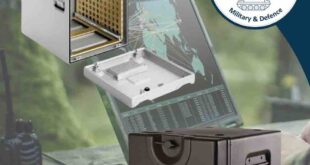Jonathan Wilkins explains how manufacturers and academia can work together to support innovation in the industry
Companies can spend a lot of money and time developing a business idea into a product — but years of research will not necessarily guarantee success. Investing in innovation is a much smarter move.
Dr Samuel West opened the Museum of Failure to showcase products that should have been left in the development phase.
Here, you can see a range of products that failed soon after their release, from the double-ended drumstick to a Betamax player. While the museum’s main purpose is to entertain, it can be a lesson in research and development for manufacturers.
Research and Development (R&D) encourages innovation and helps companies to bring viable products to the market.
According to the Office for National Statistics, UK businesses spent £23.7 billion on R&D in 2017.
While this figure is growing year on year, the UK Government wants to dedicate more to research.
The 2017 Industrial Strategy outlined that the Government wants to raise total R&D investment to 2.4% of GDP by 2027.
However, there is no guarantee that an increase in R&D spending will increase the number of innovative products that successfully enter the market.
A product’s life from concept and research to production and release is not a natural progression and many products can be lost in the process, falling into what the industry calls the ‘valley of death’.
For example, after a product is fully developed and tested companies may want to patent the technology. However, many projects can become lost at this time because of the difficulty of patents.
According to the UK Government, only one in 20 applicants get a patent if they have not received professional help. It can also take up to five years to get the patent, increasing costs for manufacturers and meaning that the product might not be as innovative once it finally gets to market.
So, how can manufacturers make sure that they can turn research into a viable product in the market?
Flexibility
The skills required to develop a product are very different to the skills needed to manufacture and commercialise that product. This means that developers may create a product that is difficult to manufacture and that the facility does not have the skills in-house to produce it.
Manufacturers can help to support researchers by scaling down their production line so that it can adapt to the different products they can manufacture.
Ask for help
Governments and businesses across the world are investing in commercialising research and development in manufacturing to establish their country as a leading innovator in the industry.
The Manufacturing Technologies Centre (MTC) in the UK aims to bridge the gap between academia and industry. It offers a state-of-the-art facility in the UK that companies can use to manufacturer products more quickly, to a higher quality and at a lower cost.
Researchers can also work in an environment where they can develop and demonstrate new products on an industrial scale.
If manufacturers do not want to end up in a museum dedicated to failure they must find a way to avoid the ‘valley of death’. Collaboration is important when developing a new technology, service or product.
If academia and businesses work together to develop new ideas they can share skills, resources and knowledge to ensure a product can easily move through the development process.
Jonathan Wilkins, is director of industrial automation parts supplier, EU Automation.
 Engineer News Network The ultimate online news and information resource for today’s engineer
Engineer News Network The ultimate online news and information resource for today’s engineer





